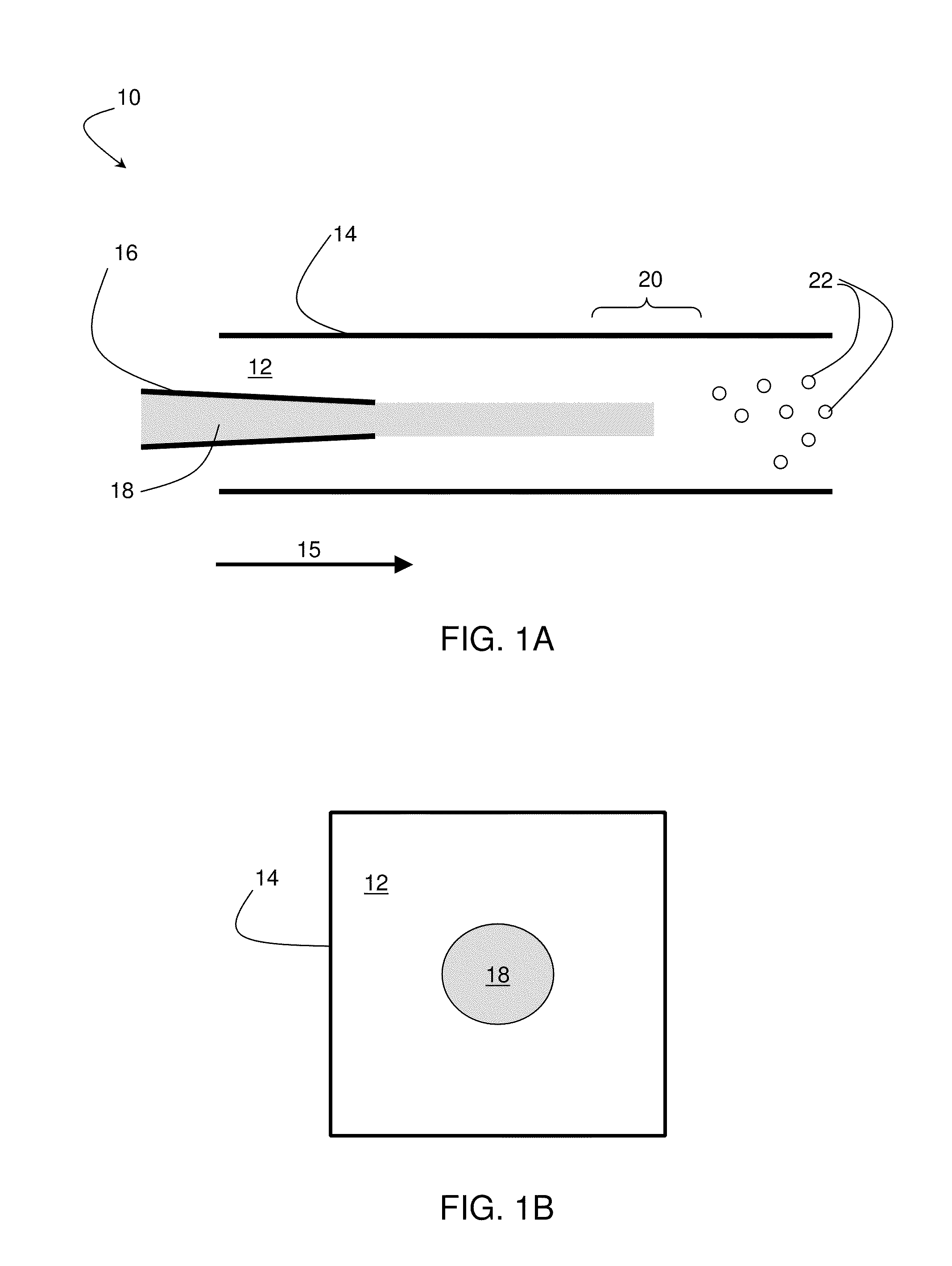Supercritical fluid facilitated particle formation in microfluidic systems
a microfluidic system and supercritical fluid technology, applied in the direction of granular delivery, other chemical processes, separation processes, etc., can solve the problems of large dispersion of particles, macroscale systems may not have uniform process conditions across the reactor, and may produce relatively large amounts of was
- Summary
- Abstract
- Description
- Claims
- Application Information
AI Technical Summary
Benefits of technology
Problems solved by technology
Method used
Image
Examples
example 1
[0062]This example describes the formation of aspirin crystals, according to one set of embodiments. FIG. 3A outlines the packaging of the microfluidic channel device used in this example. The device was fabricated by deep reactive-ion etching (DRIE) of microfluidic channels into a silicon wafer. The microfluidic channels were approximately 600 microns wide, and 250 microns deep. A backside etch was performed to form port holes in fluid communication with the microfluidic channels. An oxidation step was performed to form a SiO2 coating on the wafer (including the exposed walls of the channels). To enclose the channels, a Pyrex® wafer was bonded to the silicon (anodic bond, 350° C., 600-800 V).
[0063]Fluidic connections were made between a compression chuck and the inlet and outlet of the device using O-rings to ensure there was no leakage in the system. On the other side of the chip, a glass window was positioned between the top of the compression chuck and the device.
[0064]FIG. 3B i...
PUM
| Property | Measurement | Unit |
|---|---|---|
| size | aaaaa | aaaaa |
| size | aaaaa | aaaaa |
| size | aaaaa | aaaaa |
Abstract
Description
Claims
Application Information
 Login to View More
Login to View More - R&D
- Intellectual Property
- Life Sciences
- Materials
- Tech Scout
- Unparalleled Data Quality
- Higher Quality Content
- 60% Fewer Hallucinations
Browse by: Latest US Patents, China's latest patents, Technical Efficacy Thesaurus, Application Domain, Technology Topic, Popular Technical Reports.
© 2025 PatSnap. All rights reserved.Legal|Privacy policy|Modern Slavery Act Transparency Statement|Sitemap|About US| Contact US: help@patsnap.com



